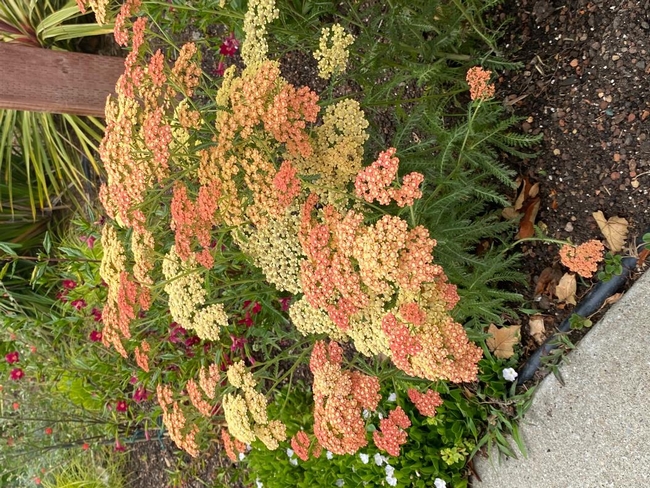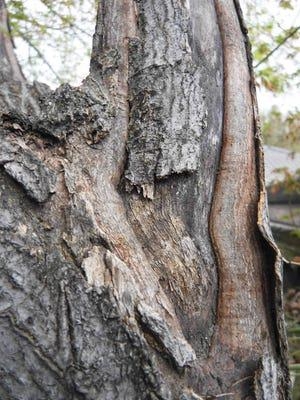As I pondered a topic for this article, brilliant rays of sunlight penetrated the dark rain clouds, bathing my garden with a beautiful rosy glow. What perfect and timely inspiration.
With respect to gardens, our sun is far more than a “mass of incandescent gas” (a phrase borrowed from the song “Why Does the Sun Shine?” by the group They Might Be Giants); the radiation from our nearby star literally powers the engine of plant growth. Sunlight is the fuel that allows plants to convert water and carbon dioxide gas into glucose—a type of sugar—and oxygen—a vital component of the air we breathe. It's a miracle of nature.
Sunlight and plant health are closely intertwined, so here are some things to consider during your spring planting and gardening chores.
All plants can be categorized by the amount of sun exposure they prefer: full sun (6 hours or more a day), part sun/shade, or full shade (1 hour or less a day). These distinctions are a standard part of nursery plant tags and reputable gardening references such as the Sunset Western Garden Book, for good reason. One of the most important factors for a plant's health is sun exposure.
If a sun-loving plant is planted in an area with too much shade, it won't get the light it needs for optimal health and growth. Conversely, a shade-loving plant will be severely stressed or killed if planted in an area where it receives too much sun.
Not all sunlight is created equal. Morning sunlight is less intense than the hot afternoon sun, particularly during our scorching summers. A plant that receives only two hours of full sun early in the day lives in a far different and milder microclimate than a plant that's exposed to full, intense sunlight at midday or during early afternoon. Sunlight is essential for plant's survival, but there can sometimes be too much of a good thing.
The angle of the sun and the length of daylight hours change constantly throughout the year, and this is an important consideration in garden planning. Yearly changes in sunlight—direct or indirect, long or short periods—can have major consequences for plant health. For example, a spot in the garden that is fully shaded during the winter could get full afternoon sun for many hours in the summertime, and only a plant with wide-ranging tolerances for sun exposure and heat/cold will thrive in such a location. Make sure you understand the year-round conditions—including seasonal sun exposure—of any planting site, and then choose the plants for that location appropriately.
Heat and light are two distinct components of sunlight, and too little or too much of either can harm plants. Symptoms of inadequate sunlight include weak, spindly growth and pale leaves. Some types of damage caused by excessive sun include bud drop, leaf scorch, leaf tip burn, sunburn, sunscald, and wilting. Sunscald is one of the most serious injuries; with too much sun exposure, the bark splits, cracks, and peels away to expose the living plant tissue underneath, which then becomes susceptible to diseases, insect damage, and even death.
Outdoor plants aren't the only ones affected by sun exposure; houseplants are, too. Relatively few plants are naturally adapted to extreme low-light conditions. A typical houseplant placed in a dark corner will eventually start to appear sickly, and might develop long, straggly growth that stretches toward the light from the nearest window. On the other hand, plants placed near a south- or west-facing window might sustain damage from too much heat or direct sunlight exposure in the late spring and summer. Window materials are also a consideration for houseplants. Older windows without UV-blocking coatings allow a wider spectrum of light (and heat) into a home, a condition which more closely mimics outdoor sunlight. On the other hand, modern windows block ultraviolet wavelengths, and plants might need to be grown under a full-spectrum grow light in order to thrive indoors.
The sun is also is factor to consider when pruning plants. If you open up the structure of a tree or shrub by removing many branches, the trunk and remaining branches or stems might suddenly be exposed to strong sunlight since they're no longer shaded by foliage. Monitor the plant to see where the sun hits remaining wood, then prevent sunscald by painting those surfaces with a temporary protective solution made by mixing equal parts water and white, water- based, flat, interior latex paint. Paint only the parts exposed to strong sunlight—upper and southwest-facing surfaces—not those that are shaded. (Do not use “sealing compounds” or tar on branches or pruning cuts; they do more harm than good. Simply prune plants on a dry day with clean tools, and allow the cut surfaces to heal naturally.)
Be sure to keep the sun in mind when planning a vegetable garden or home orchard. Vegetables need at least eight hours of sunlight per day for optimal growth and crop production. Fruit, nut, and citrus trees need six to eight or more hours of sunlight a day in order to be at their healthiest and most productive, and heat is the most important factor in the ripening of citrus fruit.
Some cautionary notes about citrus: the bark of lemon trees is especially susceptible to sunburn, as are the fruits and leaves of Red Ruby grapefruit. These citrus varieties and newly planted citrus trees appreciate some sun protection; loosely wrap their trunks with newspaper during times of peak sun exposure, or use the diluted paint mixture described above to coat the sun-exposed portions of their trunks and main branches.
Sun exposure should also influence your choice of garden mulch. Inorganic mulches such as stone and gravel can be appropriate in shady locations or when placed around heat-loving or desert-type plants. However, rock retains far more heat than organic mulches such as bark, wood chips, or leaf litter. Rock mulch absorbs heat from sunlight during the day and radiates it back to its surroundings throughout the night; this can literally bake plants, scorching their leaves, damaging their bark, and cooking their delicate surface roots. Choose garden mulches wisely, and always keep them several inches away from tree trunks and the bases of shrubs.
May sunshine brighten your days, and may you learn how to effectively manage it in your garden!

